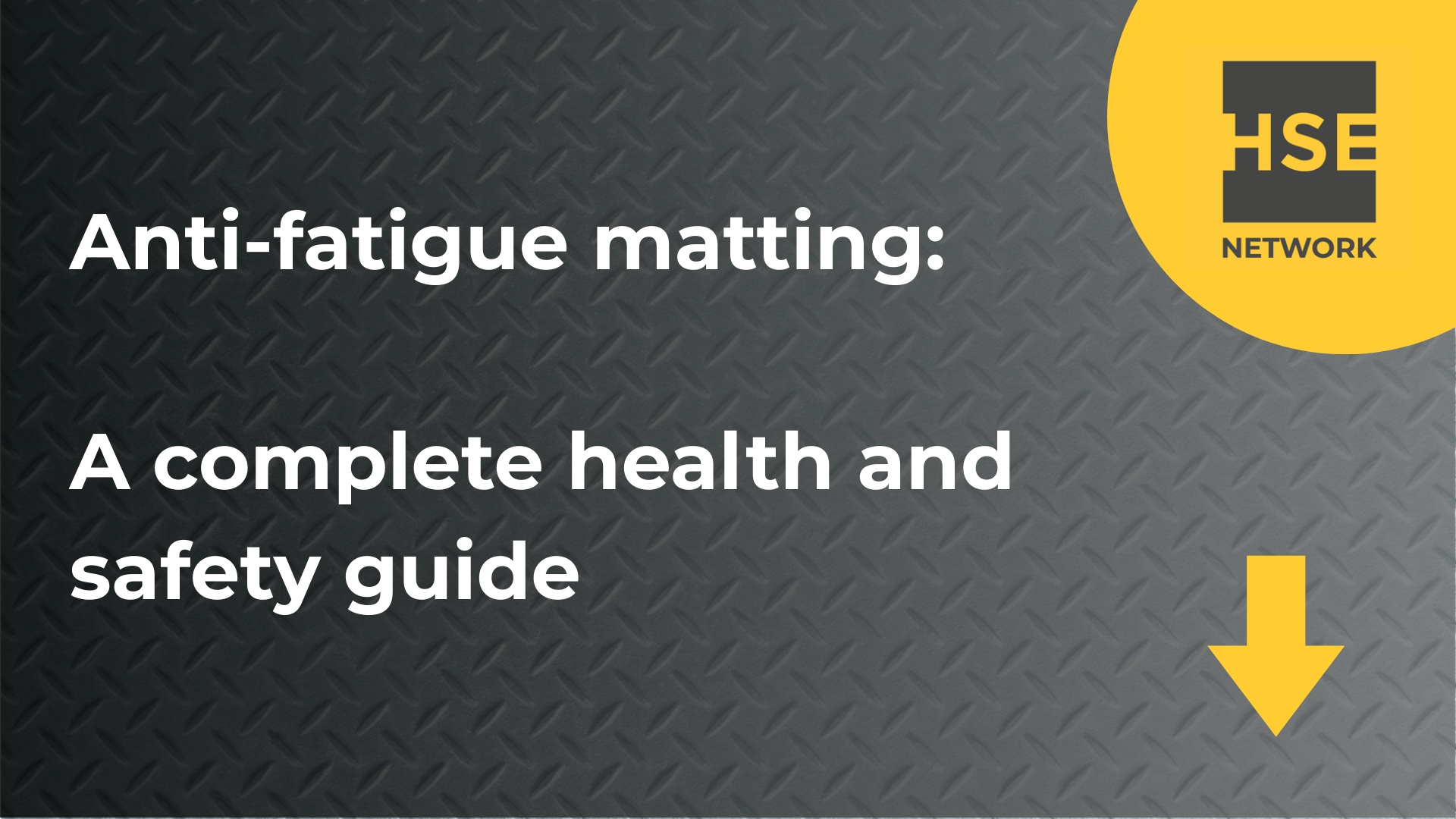Why anti fatigue matting matters for health and safety
Health and safety managers must balance compliance requirements with practical measures that protect staff. Although anti fatigue mats are not a legal requirement in the UK, the Workplace Health, Safety and Welfare Regulations 1992 state that floors and workstations must be suitable and safe. Where prolonged standing is unavoidable, providing matting supports compliance with these regulations and demonstrates a proactive approach to duty of care.

The benefits for both employees and employers are significant:
-
Lower injury risk: Standing on hard floors contributes to back pain, circulation problems and chronic musculoskeletal disorders. Matting helps reduce these risks.
-
Fewer absences: Studies show that anti-fatigue mats can cut reported fatigue and discomfort by up to 50 percent, leading to fewer sick days.
-
Improved morale and productivity: Comfortable staff are more focused, make fewer mistakes and have higher job satisfaction.
-
Reduced accident risk: Many mats are designed with non-slip surfaces, helping to prevent slips and trips.
Choosing the right anti fatigue mat
Not all mats are created equal. The right choice depends on the environment, the duration of use and the specific risks present. Health and safety managers should consider:
-
Material: Foam mats provide comfort but wear faster. Rubber mats are more durable and resist oils, grease and water. Vinyl topped mats combine comfort with durability.
-
Thickness: A mat that is too thin offers little benefit, while one that is too soft can cause instability. Nine millimetres is the most common choice for continuous use, while thicker mats are suited to heavy duty environments.
-
Surface texture: Non slip finishes improve grip. Mats designed for kitchens or workshops may also include drainage holes.
-
Environment: Dry areas may only require foam or vinyl mats, while wet or oily settings need specialist industrial designs.
-
Size and placement: Mats should fit comfortably within workstations without creating a trip hazard.
How to maintain anti fatigue mats
To maximise lifespan and hygiene, mats should be cleaned and inspected regularly:
-
Wipe or hose down mats daily in kitchens and food environments
-
Use mild detergents and avoid harsh chemicals that may damage surfaces
-
Allow mats to dry fully before returning to service
-
Replace mats that show signs of wear, curling edges or reduced cushioning
A well maintained mat can last several years, depending on the intensity of use and the environment.
Final thoughts
Anti fatigue matting is a small investment that delivers measurable improvements in worker safety, comfort and productivity. For health and safety managers, providing ergonomic flooring is not only a compliance measure but also a proactive step in building a healthier workplace culture.
Common FAQs on anti-fatigue matting
An anti fatigue mat reduces strain on muscles and joints by encouraging subtle movements while standing. This improves circulation, relieves pressure and reduces fatigue.
Yes. Multiple studies have shown they lower discomfort, improve posture and help prevent musculoskeletal issues caused by prolonged standing.
Most mats last two to three years with regular use, but this depends on the environment, material and maintenance. Heavy duty rubber mats may last longer.
Yes. By reducing spinal pressure and improving posture, mats can significantly ease lower back pain associated with long periods of standing.